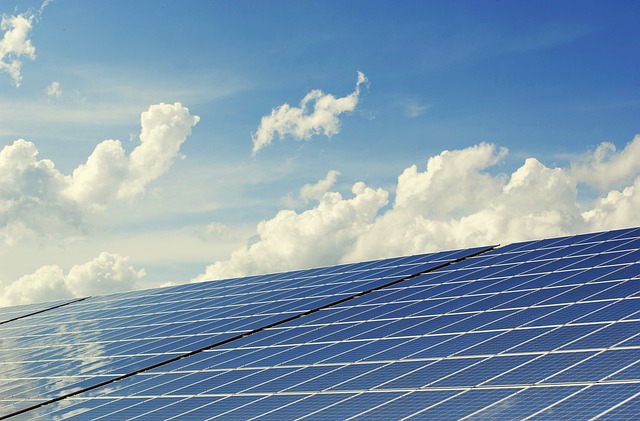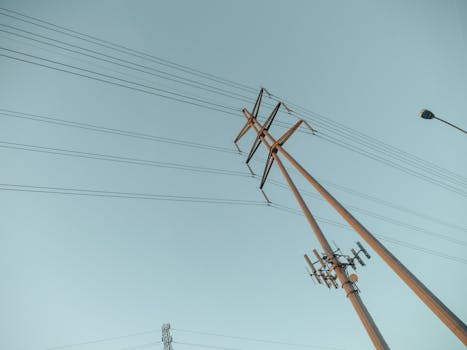“Maximize Your Solar Power: Essential Wiring Tips for Optimal Energy Output!”
Maximizing energy output from solar panels is essential for optimizing the efficiency and effectiveness of a solar power system. Proper wiring plays a crucial role in ensuring that the energy generated is transmitted effectively to the inverter and ultimately to the electrical grid or battery storage. This introduction outlines key solar wiring tips, including selecting the right wire gauge, minimizing voltage drop, ensuring proper connections, and adhering to safety standards. By implementing these strategies, homeowners and installers can enhance the performance of their solar energy systems, leading to increased energy production and long-term savings.
Proper Sizing of Solar Wires
When it comes to maximizing energy output from a solar power system, one of the most critical yet often overlooked aspects is the proper sizing of solar wires. The wires used in a solar installation play a significant role in ensuring that the energy generated by the solar panels is efficiently transmitted to the inverter and ultimately to the electrical grid or battery storage. Therefore, understanding how to size these wires correctly is essential for optimizing performance and minimizing energy loss.
To begin with, the size of the solar wires must be determined based on the current that will flow through them. This current is influenced by the total wattage of the solar panels and the voltage of the system. For instance, a higher wattage system will produce more current, necessitating thicker wires to handle the increased load without overheating. Conversely, a lower wattage system may require thinner wires. It is crucial to consult the National Electrical Code (NEC) guidelines, which provide specific recommendations for wire sizes based on the amperage and length of the run. Following these guidelines not only ensures safety but also enhances the efficiency of the solar power system.
Moreover, the length of the wire run is another vital factor in determining the appropriate wire size. As the distance between the solar panels and the inverter increases, so does the resistance in the wire, which can lead to voltage drop. Voltage drop is a reduction in voltage that occurs as electricity travels through the wire, and excessive voltage drop can significantly reduce the efficiency of the solar system. To mitigate this issue, it is advisable to use thicker wires for longer runs. A common rule of thumb is to keep voltage drop below 3% for optimal performance. By calculating the expected voltage drop based on wire length and current, one can select the appropriate wire gauge to maintain efficiency.
In addition to current and length, the type of wire insulation also plays a role in the overall performance of the solar wiring system. Solar installations are typically exposed to various environmental conditions, including heat, moisture, and UV radiation. Therefore, using wires with appropriate insulation ratings, such as THHN or PV wire, is essential for durability and longevity. These types of wires are designed to withstand harsh conditions, ensuring that the system remains operational over time without significant degradation.
Furthermore, it is important to consider the installation environment when sizing solar wires. For example, if the wires will be installed in areas with high ambient temperatures, it may be necessary to upsize the wires to account for the increased resistance caused by heat. Similarly, if the wires are to be buried underground or installed in conduits, additional considerations regarding insulation and protection from physical damage should be taken into account.
Ultimately, proper sizing of solar wires is a fundamental aspect of any solar power installation. By carefully considering factors such as current, wire length, insulation type, and environmental conditions, one can ensure that the solar system operates at peak efficiency. This attention to detail not only maximizes energy output but also contributes to the overall reliability and longevity of the solar power system. In conclusion, investing time and effort into understanding and implementing proper wire sizing techniques will yield significant benefits, making it a crucial step in the journey toward harnessing solar energy effectively.
Understanding Voltage Drop in Solar Systems

Understanding voltage drop in solar systems is crucial for optimizing energy output and ensuring the efficiency of your solar installation. Voltage drop refers to the reduction in voltage as electrical current travels through conductors, which can significantly impact the performance of solar panels and the overall system. When designing a solar energy system, it is essential to consider the distance between the solar panels and the inverter, as well as the gauge of the wiring used. A longer distance typically results in a greater voltage drop, which can lead to reduced energy production and increased strain on the system components.
To begin with, it is important to recognize that all electrical conductors have some inherent resistance. This resistance causes energy loss in the form of heat, which translates to a decrease in voltage as the current flows through the wires. The amount of voltage drop is influenced by several factors, including the length of the wire, the cross-sectional area of the conductor, and the amount of current flowing through it. Therefore, when planning your solar installation, it is advisable to keep the distance between the solar panels and the inverter as short as possible. This not only minimizes voltage drop but also enhances the overall efficiency of the system.
Moreover, selecting the appropriate wire gauge is vital in mitigating voltage drop. Thicker wires have a lower resistance, which means they can carry more current with less voltage loss. The American Wire Gauge (AWG) system provides a standardized way to determine wire sizes, and it is essential to choose a gauge that is suitable for the specific current levels in your solar system. For instance, if your system generates a significant amount of current, opting for a lower AWG number (which corresponds to a thicker wire) can help reduce voltage drop and improve energy output. Conversely, using a higher AWG number may save on material costs initially, but it can lead to inefficiencies and increased energy losses over time.
In addition to wire gauge and distance, the type of connections and junctions used in the system can also contribute to voltage drop. Poor connections can introduce additional resistance, leading to further energy losses. Therefore, it is crucial to ensure that all connections are secure and properly installed. Utilizing high-quality connectors and regularly inspecting them for wear and corrosion can help maintain optimal performance and minimize voltage drop.
Furthermore, it is beneficial to calculate the expected voltage drop in your solar system during the design phase. Various online calculators and tools can assist in determining the voltage drop based on the specific parameters of your installation. By understanding the potential voltage drop, you can make informed decisions about wire sizing and layout, ultimately leading to a more efficient solar energy system.
In conclusion, understanding voltage drop is a fundamental aspect of maximizing energy output in solar systems. By considering factors such as wire length, gauge, and connection quality, you can significantly reduce energy losses and enhance the overall performance of your solar installation. As the demand for renewable energy continues to grow, ensuring that your solar system operates at peak efficiency will not only benefit your energy needs but also contribute to a more sustainable future. By taking these considerations into account, you can harness the full potential of solar energy and enjoy the long-term benefits it offers.
Choosing the Right Wire Type for Solar Installations
When embarking on a solar installation project, one of the most critical decisions involves selecting the appropriate wire type. The right wiring not only ensures the efficiency of energy transfer but also enhances the overall safety and longevity of the solar system. To maximize energy output, it is essential to understand the various wire types available and their specific applications within solar installations.
First and foremost, the most commonly used wire types in solar applications are copper and aluminum. Copper wire is favored for its superior conductivity, which allows for minimal energy loss during transmission. This characteristic is particularly important in solar installations, where every bit of energy generated needs to be efficiently transported to the inverter and subsequently to the grid or battery storage. Although copper is more expensive than aluminum, its durability and performance often justify the investment, especially in larger systems where efficiency is paramount.
On the other hand, aluminum wire, while less conductive than copper, can still be a viable option for certain applications, particularly in larger gauge sizes. It is lighter and more cost-effective, making it an attractive choice for extensive installations where weight and budget constraints are significant considerations. However, it is crucial to ensure that aluminum wiring is properly sized and installed, as it can be more prone to overheating if not handled correctly. Therefore, when opting for aluminum, one must adhere to strict installation guidelines to mitigate any potential risks.
In addition to the material, the wire gauge is another vital factor in optimizing energy output. The American Wire Gauge (AWG) system is commonly used to determine wire size, with lower numbers indicating thicker wires. Thicker wires have lower resistance, which translates to less energy loss. For solar installations, it is generally recommended to use a wire gauge that minimizes voltage drop, typically no more than 3% from the solar panels to the inverter. This means that for longer runs, a thicker wire may be necessary to maintain efficiency.
Moreover, the insulation type of the wire is equally important. Solar installations often require wires that can withstand harsh environmental conditions, including UV exposure, moisture, and temperature fluctuations. Therefore, selecting wires with appropriate insulation ratings, such as THHN or USE-2, is essential. These types of insulation are designed to endure outdoor conditions, ensuring that the wiring remains intact and functional over time.
Furthermore, it is crucial to consider the specific application of the wiring within the solar system. For instance, the wiring connecting the solar panels to the inverter may differ from that used for the DC to AC conversion. Each segment of the installation may have unique requirements based on its function and location. Therefore, consulting with a professional or referring to local electrical codes can provide valuable guidance in selecting the right wire type for each application.
In conclusion, choosing the right wire type for solar installations is a multifaceted decision that significantly impacts energy output. By carefully considering factors such as material, gauge, insulation type, and specific application, one can ensure that the solar system operates at peak efficiency. Ultimately, investing time and resources into selecting the appropriate wiring will not only enhance energy production but also contribute to the overall safety and reliability of the solar installation.
Best Practices for Solar Panel Connections
When it comes to maximizing energy output from solar panels, the connections made during installation play a crucial role. Proper wiring techniques not only enhance efficiency but also ensure the longevity and safety of the solar energy system. To begin with, it is essential to use high-quality materials that are specifically designed for solar applications. This includes selecting wires that are rated for outdoor use and can withstand various environmental conditions. Using UV-resistant cables will prevent degradation over time, which is vital for maintaining optimal performance.
Moreover, the gauge of the wire is another critical factor to consider. Thicker wires, while more expensive, can significantly reduce resistive losses, especially in larger systems where the distance between the solar panels and the inverter is considerable. By minimizing voltage drop, thicker wires help ensure that more of the generated energy reaches the inverter, thereby maximizing overall output. It is advisable to consult the National Electrical Code (NEC) guidelines to determine the appropriate wire size based on the system’s amperage and length of the run.
In addition to selecting the right materials, the method of connecting the solar panels also impacts energy efficiency. Series connections, where panels are linked one after another, can be beneficial in maximizing voltage output. However, this configuration can lead to issues if one panel is shaded or underperforming, as it can affect the entire string. To mitigate this risk, incorporating bypass diodes can help. These diodes allow current to flow around shaded or malfunctioning panels, ensuring that the rest of the system continues to operate efficiently.
On the other hand, parallel connections can be advantageous in certain scenarios, particularly when dealing with panels of varying output. This configuration allows each panel to operate independently, which can be beneficial in partially shaded environments. However, it is crucial to ensure that the inverter can handle the combined output of the panels in parallel to avoid overloading.
Furthermore, attention to detail during installation cannot be overstated. Ensuring that all connections are tight and secure is vital for preventing energy loss. Loose connections can lead to arcing, which not only reduces efficiency but can also pose a fire hazard. Regular inspections and maintenance of the connections are recommended to identify any potential issues before they escalate.
Another best practice involves the strategic placement of solar panels. While this may not directly relate to wiring, the orientation and tilt of the panels can significantly influence energy output. Positioning panels to receive maximum sunlight throughout the day will enhance their efficiency, making the wiring choices even more impactful. Additionally, shading from nearby trees or buildings should be minimized to ensure that the panels operate at their full potential.
Finally, integrating monitoring systems can provide valuable insights into the performance of the solar energy system. By tracking energy production and identifying any discrepancies, homeowners can quickly address issues related to wiring or panel performance. This proactive approach not only maximizes energy output but also extends the lifespan of the entire system.
In conclusion, the best practices for solar panel connections encompass a combination of high-quality materials, appropriate wiring techniques, and meticulous installation. By paying attention to these details, homeowners can significantly enhance the efficiency and reliability of their solar energy systems, ultimately leading to greater energy output and long-term savings.
Q&A
1. **Question:** What is the ideal orientation for solar panels to maximize energy output?
**Answer:** Solar panels should ideally be oriented towards the south (in the Northern Hemisphere) or north (in the Southern Hemisphere) at an angle that matches the latitude of the installation location to maximize sunlight exposure.
2. **Question:** How can shading affect solar panel performance?
**Answer:** Shading from trees, buildings, or other obstructions can significantly reduce the energy output of solar panels, so it’s important to ensure that panels are installed in a location with minimal shading throughout the day.
3. **Question:** What type of wiring should be used for solar panel installations?
**Answer:** Use UV-resistant, weatherproof wiring, such as THHN or PV wire, to ensure durability and safety in outdoor conditions, and ensure that all connections are secure to prevent energy loss.
4. **Question:** How can the placement of solar inverters impact energy efficiency?
**Answer:** Placing solar inverters close to the solar panels can reduce energy loss due to voltage drop in the wiring, thus improving overall energy efficiency and output.
Conclusion
To maximize energy output from solar wiring, ensure proper sizing of wires to minimize voltage drop, use high-quality connectors to maintain efficient connections, and implement a well-planned layout that minimizes shading and optimizes sunlight exposure. Regular maintenance and monitoring of the system can also help identify and rectify any issues that may affect performance. By following these tips, you can enhance the efficiency and longevity of your solar energy system.




